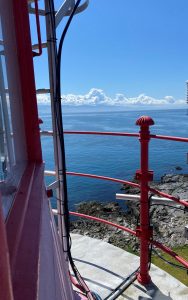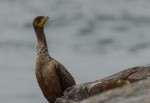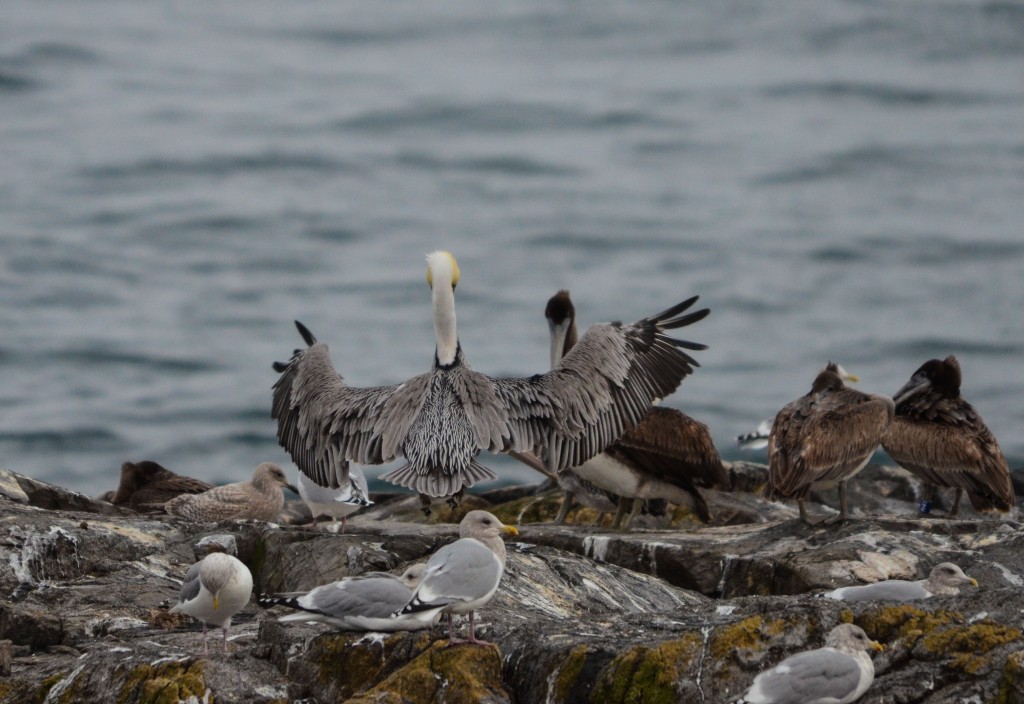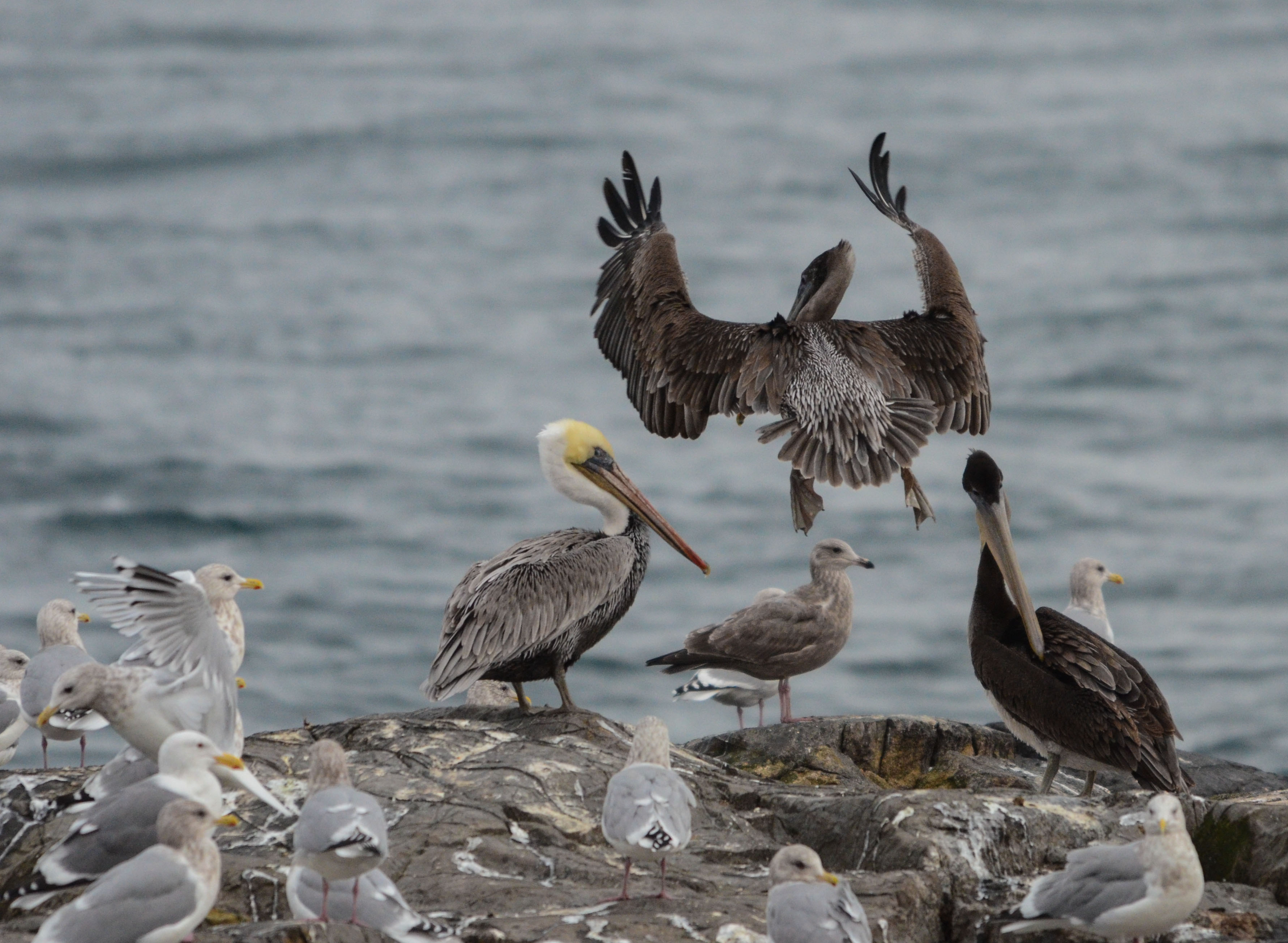Wind: yesterday 0-31 knots from W to E to N, today 10-17 knots from N-NE
Sea State: yesterday rippled, today rippled with chop up to 1 m in morning
Visibility: both days 10-15 NM
Sky: both days clear
Temperature: yesterday 5-7 °C, today 4-6 °C
Atmospheric CO2: 413.85 ppm (recorded by NOAA at Mauna Loa Observatory, Hawaii)
There were some exciting sightings over the past two days. Just before sunset this evening, a pod of orcas was swimming in the current to the west of the island. There were at least five or six orcas of various ages.
This morning, between 20 to 30 pigeon guillemots were paddling through the Middle Channel, to the north of the main island. Some still have grey-ish heads of their winter plumage.
Yesterday one tour boat, two sailboats and three pleasure crafts passed through the ecological reserve. Today three tour boats travelled by the islands. No visitors were on the island.
The military was doing demolition training for the past two days on Bentinck Island.
See the photos below for sights from the past two days:
-

-
Two kinds of chitons were seen in the intertidal zone: mossy chiton on the left and black katy chiton on the right.
-

-
A late afternoon low tide shows the old boat ramp that went straight out and the existing ramp with rails for the boat dolly.
-

-
An injured gull that is missing its lower mandible (bill). It might have been attacked by a bald eagle and got away.
-

-
Yesterday’s sunset at 5:30pm. Can you spot the snoozing california sea lion in the foreground?
-

-
Six pigeon guillemots paddle through Middle Channel.
-

-
Daffodils with the youngest adult male elephant seal in the background.
-

-
For the past few days, the two female elephant seal pups have been hanging out and vocalizing to each other.
-

-
A male elephant seal on the helicopter pad is lit up by the glow of the sunset this evening.
-

-
A pod of orcas swam by the west of the island this evening in an ebbing current. Two of the orcas can be seen here. There were at least three others.
-

-
The large dorsal fin of a male orca
-

-
A bald eagle perches on top of the camera 5 housing and takes a poop. Mount Baker (Kulshan) can be seen in the background.
-

-
The same bald eagle that was on the camera housing, perches on the roof of the residence. I noticed the metal band on its left leg, but couldn’t make out any markings on the band.



































